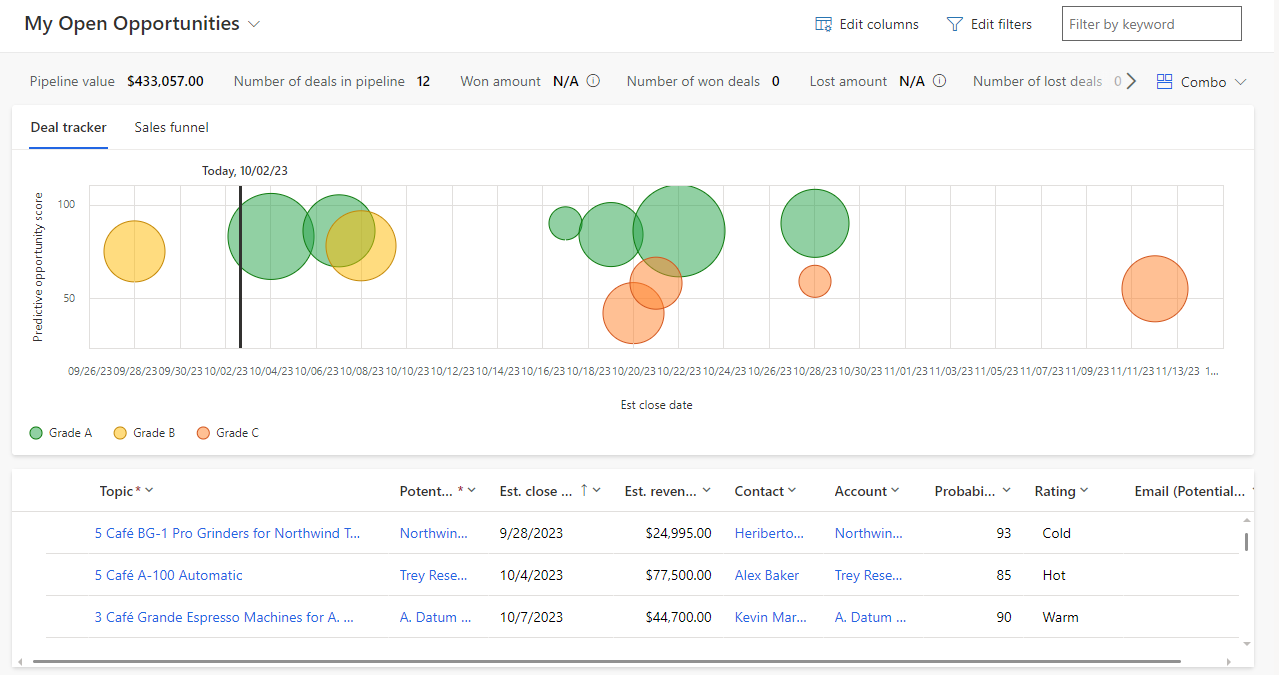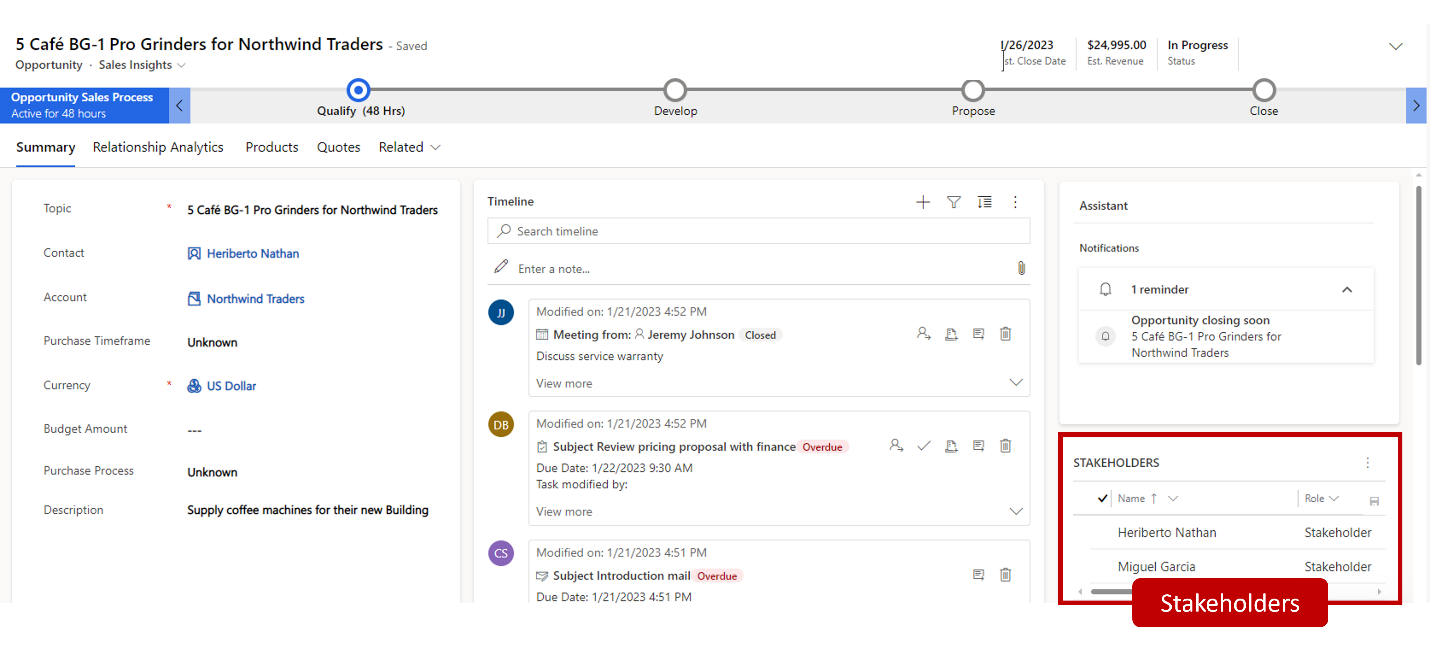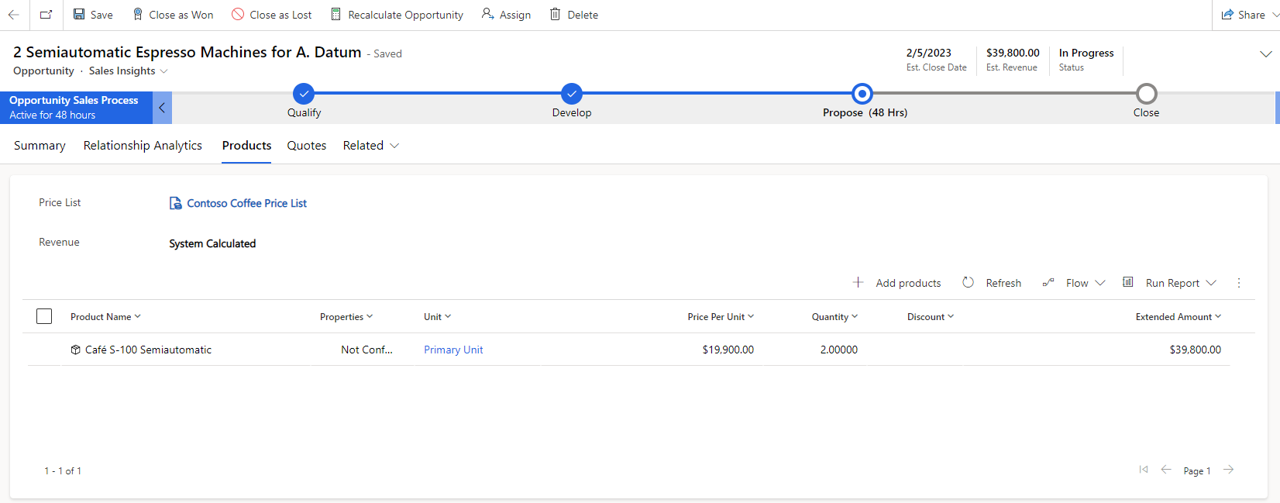Describe the opportunity management process
Opportunities represent a potential sale. Unlike leads, opportunities provide more specific details such as potential revenue, timelines, and product or service details. For Contoso Coffee, opportunities might specify a specific roast a customer is interested in, or the type of machine along with the number of machines they're looking to purchase. Opportunities are an important part of the sales process because that is typically what the sales team spends most of its time and effort. Managing opportunities typically includes several customer interactions such as meetings with the customer, phone calls, or tasks. Often, how well the sales team manages their opportunities is the difference between a win and a loss.
Effectively managing opportunities can involve several tasks:
Assigning and sharing opportunities with the most appropriates individuals or teams.
Tracking product and service details for items the customer is interested in.
Providing the most appropriate literature to the customer.
Managing and tracking sales activities related to the opportunity.
Tracking stakeholders and competitors.
Moving opportunities through a sales process workflow.
The opportunity pipeline view makes it easy for sellers to work with their opportunities. The pipeline score chart shows all your opportunities in chronological order based on their estimated close date. Opportunities are color code based on their lead score and the circles are based on the size of the opportunity. The larger the circle, the larger the deal.

When opportunities are created, it's important to define as much information as possible about the current situation and what is needed to move forward. This information helps organizations better understand which sales process should be executed, based on the opportunity type, size, and timeline. It can also help the organization better understand what sales resources should be assigned to the record to provide them with the best chance of winning the deal.
Like leads, opportunities contain information that can be useful as the opportunity is being worked such as the Timeline, Assistant, Stakeholders, Competitors, and Business Process Flows. Additionally, opportunities define the products, services, and price list details for items that are included in the opportunity. In the image, we can see an example opportunity for Contoso Coffee. The opportunity includes two Café’ S-100 Semiautomatic espresso machines. Based on cost details provided in Dynamics 365 Sales, the estimated revenue for opportunity is automatically calculated based on the Contoso Coffee Price List.
This information helps not only better forecast revenue, but it helps as the opportunity advances through the sales process.

